Kathmandu Valley is one of the fastest growing metropolitan areas in south asia and the first region in Nepal to face the unprecedented challenges of rapid urbanization and modernization at a metropolitan scale.
Kathmandu also known as the city of temples, with one of the oldest pagodas known as pashupatinath temple, stands at an elevation of approximately 1400 metres (4,600 feet) above sea level in the bowl-shaped kathmandu valley in central Nepal. The valley is historically termed as “Nepal Mandala” and has been the home of newar people, a cosmopolitan urban civilization in the himalayas foothills. The city was the royal capital of the kingdom of nepal and hosts palaces, mansions and gardens of the nepalese aristocracy. It has been home to the headquarters of the south asian association for regional cooperation (SAARC) since 1985. Today it is the seat of government of the nepalese republic established in 2008 and is part of the bagmati province.
Tourism is an important part of the economy. In 2013, Kathmandu was ranked third among the top ten upcoming travel destinations in the world by TripAdvisor, and ranked first in asia. The city is the gateway to the nepalese himalayas and home to several world heritage sites: Durbar Square, Swayambhunath, Boudhanath and Pashupatinath. Historic areas of kathmandu were severely damaged by a 7.8 magnitude earthquake on 25 April 2015. Some of the buildings have been restored and some are in the process of reconstruction until now.
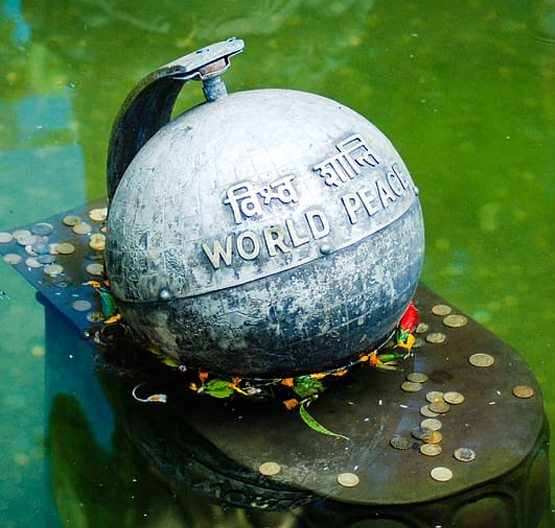
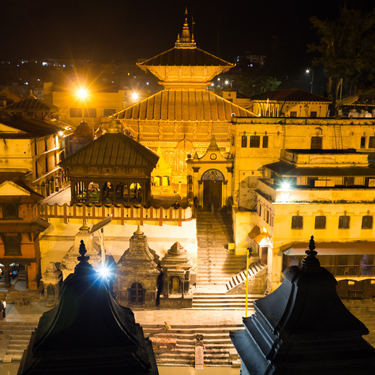
PASHUPATINATH TEMPLE
The Pashupatinath Temple is a famous and sacred hindu temple complex located approximately 5 km north-east of kathmandu. The temple serves as the seat of pashupatinath. This temple complex was inscribed on the UNESCO world heritage sites’s list in 1979. This “extensive hindu temple precinct” is a “sprawling collection of temples, ashrams, images and inscriptions raised over the centuries along the banks of the sacred bagmati river” and is included as one of the seven monument groups in UNESCO’s designation of kathmandu valley as visit here.
THAMEL
Thamel is known by its narrow alleys crowded with various shops and vendors. Commonly sold goods include food, fresh vegetables/fruits, pastries, trekking gear, walking gear, music, DVDs, handicrafts, souvenirs, woolen items and clothes. Travel agencies, small grocery stores, budget hotels, restaurants, pubs and clubs also line the streets. Cars, cycle rickshaws, two-wheelers and taxis ply these narrow streets alongside hundreds of pedestrians. Recently many roads in thamel have been declared vehicle free zones to avoid crowd and traffic havoc.
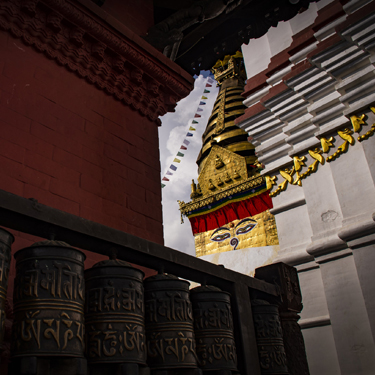
SWAYAMBHUNATH
Swayambhu is an ancient religious architecture atop a hill in the kathmandu valley, west of kathmandu city. For the buddhist newars whose mythological history and origin myth as well as day-to-day religious practice swayambhunath occupies a central position, The stupa has buddha’s eyes and eyebrows painted on. There are also shops, restaurants and hostels. The site has two access points: The first sight on reaching the top of the long stairway is the vajra and a car road around the hill from the south leading to the south-west entrance.
NARAYANHITI PALACE MUSEUM
Narayanhiti Palace or Narayanhiti Durbar converted to narayanhiti palace museum in 2008 is a palace in kathmandu, which long served as the residence and principal workplace of the reigning monarch of the kingdom of nepal. Located in the capital city of kathmandu, the palace was the centre of state occasions and royal hospitality. The palace complex is located towards east of the kaiser mahal next to thamel and is incorporated in an impressive and vast array of courtyards, gardens and buildings. The current narayanhiti durbar was built by king mahendra in 1963.
KATHMANDU DURBAR SQUARE
Kathmandu Durbar Square is in front of the old royal palace of the former kathmandu kingdom which is UNESCO world heritage sites. The royal palace was originally at dattaraya square and was later moved to the durbar square. The kathmandu durbar square held the palaces of the malla and shah kings who ruled over the city. Along with these palaces, the square surrounds quadrangles, revealing courtyards and temples. It is known as hanuman dhoka durbar square, a name derived from a statue of hanuman, the monkey devotee of lord ram at the entrance of the palace.
GARDEN OF DREAMS
The garden of dreams also the garden of six seasons, is a neo-classical garden in kaiser mahal kathmandu, Nepal built in 1920. Designed by kishore narshingh, it consists of 6,895 square metres (74,220 sq ft) of gardens with three pavilions, an amphitheater, ponds, pergolas, and urns. From the mid-1960s, upon the death of its patron, Kaiser Sumsher Rana, it lay in neglect but was recently restored with the help of the austrian government.
BOUDHANATH
Boudhanath is a stupa located about 11 km from the center and northeastern outskirts of kathmandu. The stupa massive mandala makes it one of the largest spherical stupas in Nepal. The influx of large populations of refugees from tibet has seen the construction of over 50 gompas (Tibetan convent) around boudha. As of 1979, boudha stupa is a UNESCO world heritage site. Along with swayambhu, it is one of the most popular tourist sites in the kathmandu area.
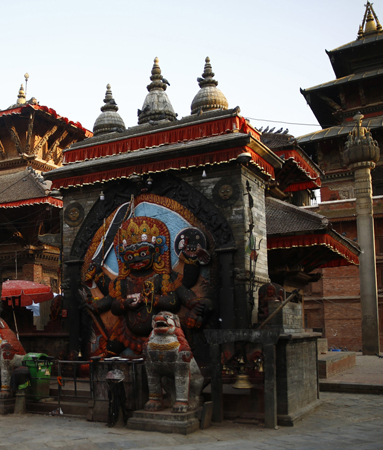

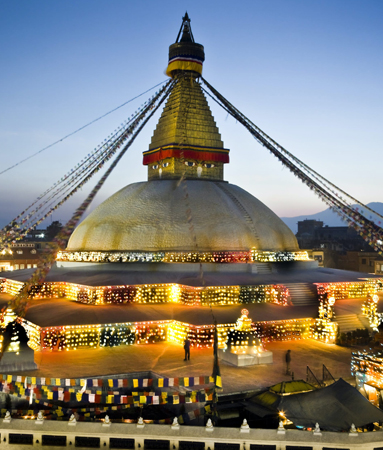
DISTANCE FROM HOTEL
